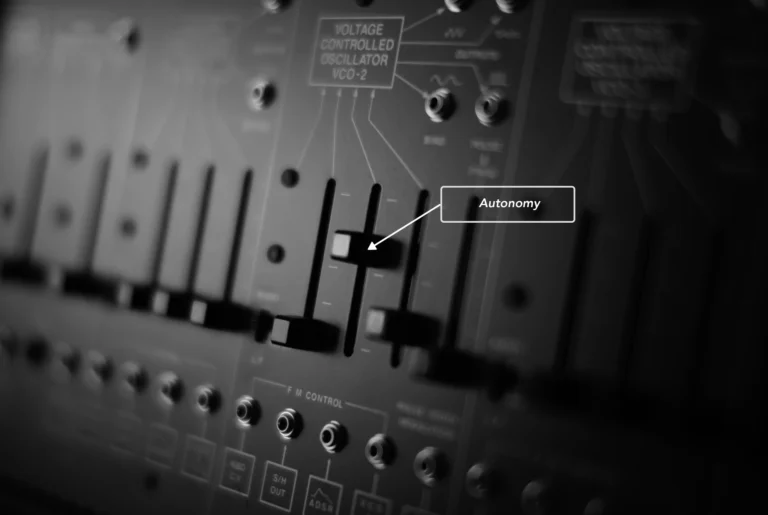Robot solution providers (also known as integrators) play a crucial role in the era of robotic adoption, bridging the gap between cutting-edge robotics technology and businesses seeking automation solutions. As the demand for multi-vendor robot solutions continues to grow, integrators face unique challenges in managing diverse robot fleets and deploying successfully disparate systems. As the demand for multi-vendor robot solutions grows, solution providers need to ensure they’re offering the best solutions the industry has to offer, in both hardware and software.
The solution provider model has gained significant traction in recent years, due to their capacity to simplify the adoption of complex robotic systems, allowing businesses to leverage cutting-edge technology without the need for extensive in-house expertise. However, it’s not easy to pioneer a new path for robotic adoption: there are many challenges this model can present that are uncharted in the industry.
At Formant, we work with a variety of solution providers, and have learned how to plan accordingly to help them successfully scale fleets and avoid common pitfalls. Let’s dig into our advice, below.
Understand your niche
Defining a clear niche is vital to long-term success for solution providers. While it may be tempting to position the company as a one-size-fits-all solution, this approach often leads to overcommitment and continuous scope creep.
Instead, focus on addressing a set of specific tasks, such as floor cleaning or last-mile delivery, which enables the team to develop a deep understanding of target customers’ specific needs. Setting firm parameters around the fleet and the greater service offering can also set you apart from competitors. By narrowing your focus, you can offer more tailored solutions and provide greater value to your clients. This approach also helps in avoiding the pitfall of trying to be everything to everyone, which can stretch resources thin and compromise the quality of your offerings.
Go beneath the surface for customers
In support of this, the most important thing to do first is to understand your target customers, going beyond surface-level knowledge of each industry your solution supports. Dive deep into their operational challenges, pain points, and long-term goals. This insight will enable you to develop solutions that genuinely address their needs and even forecast how those may change in the future, allowing you more time to plan. Your customer’s needs likely won’t be the same in six to twelve months, and solution providers are expected to adapt as industries do.
Know when to say no
Of course, not every company that could use your solution is the right fit. One critical aspect of maintaining focus is learning to say “no” to opportunities that don’t fully align with your core offerings. While it may seem counterintuitive to turn down business, doing so allows you to allocate resources more effectively and deliver superior results to your ideal customers.
Remember, adoption can make or break a deployment. If non-technical everyday users feel they can’t understand day-to-day operations or the overall ROI, any deal is in jeopardy. By focusing on your niche and truly understanding your customers, you can create solutions that are not only technologically advanced but also user-friendly and that all end-users will see as valuable.
Offer flexibility: heterogeneous fleets and diverse solutions
It sounds cliche, but being adaptable is a true differentiator for your prospective and current customers. As a solution provider, your ability to offer flexible solutions that can integrate with diverse robot fleets will set you apart from competitors and “future-proof” your model; at least for as long until the next shift comes.
Support a unified multi-OEM strategy
First, supporting multi-OEM expansion is crucial. Clients often have diverse needs that may require different types of robots or hardware from various manufacturers. Almost every OEM has its own specific software to support its robots, and training staff in addition to managing each system as a solution provider can quickly become overbearing. Instead, a unified third party platform that can support any vendor and integrate with additional tools, such as Grafana, BI tools, or Jira, will save your team valuable time and make for a smooth deployment every time.
By offering solutions that can manage multi-vendor fleets through a single platform, like Formant, you enable your customers to take on diverse portfolios without worrying about scalability or dealing with disparate systems.
Also, taking a unified approach to heterogeneous fleets future-proofs the customer’s investments, as they can easily integrate new robotic technologies as they emerge. The ability to manage heterogeneous fleets through a single pane of glass not only simplifies operations for your clients but also provides them with comprehensive insights across their entire robotic fleet. Additionally, future scaling needs to be a central focus of a unified approach. It’s vital that solution providers build a tech stack that will support the inevitable exponential growth of new robots and solutions that will hit the market in the next five years and beyond.
Know your business value
Expanding your value proposition beyond the robot itself is another critical strategy. Consider how you can integrate robotics into broader business processes and workflows. This approach not only increases the value you provide to customers but also helps embed your solutions more deeply into their operations, fostering long-term partnerships. By leveraging data and insights gathered from robot fleets, you can inform and optimize other business processes.
For instance, data on robot performance and task completion rates can help refine production schedules or inventory management. Patterns in robot usage can reveal opportunities for process improvements or highlight areas where human intervention might be more effective. These data-driven insights enable your clients to make informed decisions across their entire operation, from resource allocation to strategic planning, thereby amplifying the impact of your robotic solutions beyond their immediate applications.
Responsiveness and support: ensure customer satisfaction
In robotics, customer service and support play a critical role in ensuring long-term success, yet they’re often overlooked. The complexity of robotic systems means that issues can arise, and when they do, timely responses are crucial to maintain operational efficiency and customer satisfaction.
Focus on tech support
Implementing a robust support system that can handle an influx of support tickets is essential. This includes not only having a knowledgeable team available around the clock to address problems but also leveraging technology to enable efficient troubleshooting and minimize downtime of a robot. Tools like Formant’s cloud robotics platform can be instrumental here, providing a log of historical data as well as events to alert teams to issues, quickening response times. Centralized management platforms streamline operations by enabling businesses to manage their fleets from a single hub; this capability is particularly valuable for solution providers managing diverse fleets across various customer sites.
Demonstrate value to stakeholders
Remember that support goes beyond just fixing problems. It’s about enabling your customers to maximize the value of their fleet and experience tangible benefits. Always be prepared to demonstrate the ROI of your solutions with operational metrics that enable prospects, customers, and investors to easily understand the benefits of your service model at a glance. This transparency not only helps in retaining and expanding existing customer deals, but also in attracting new ones.
Success as a robot solution provider hinges on three key strategies: understanding your niche and maintaining a customer-centric approach, offering flexible solutions for heterogeneous fleets, and providing responsive, data-driven support. By focusing on these areas, you can differentiate your offerings, deliver significant value to your clients, and thrive in the competitive robotics industry.
To learn more about how Formant supports solution providers, request a demo with your team.



